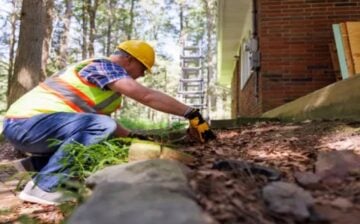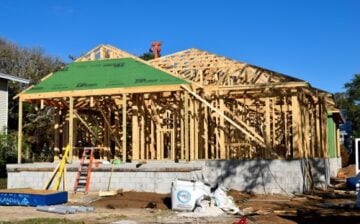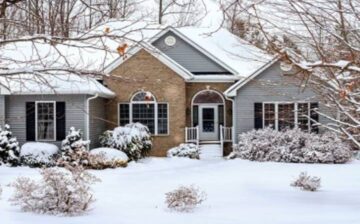Your home’s property value is influenced by a number of factors, and foundation health is the one that can give it a major lift. A solid foundation keeps your home safe for a long time. However, foundations can be damaged over time due to various factors such as shifting soil, regular wear and tear, and water leaks. Foundation damage can give rise to problems like wall cracks, uneven floors, and structural damage. Experts have come up with various methods to fix your home foundation and preserve the property value. Let’s have a look at some of these methods in this blog post.

Steel Piering
Steel piers or push piers are used to stabilize foundations that have undergone settlement or movement. Foundation repair experts frequently employ steel piering to lift a foundation back to the ideal elevation. Each steel pier is a galvanized steel pier driven into the ground with hydraulic force. Have a look at some of the pros and cons of steel piering:
Pros
-
- Corrosion-Free: Push piers are resistant to corrosion.
- High Load Bearing Capacity: The high load-bearing capacity of steel piers provides support for foundations.
- Adjustable: Steel piers can be precisely adjusted to level the foundation.
- Minimal Disruption: The process causes minimal disruption to the surrounding landscape.
- Cost-Effective: Steel piers are more cost-effective than the alternative, helical piers,
Cons
- Depth Limitation: The depth of installation may be limited by soil conditions.
- Lack of Versatility: Push piers are not as versatile as helical piers and can only be installed for heavier structures.
Helical Piering
Helical piers, also known as helical anchors or screw piles, include a pier with helical blades attached. During installation, the piers are screwed into the soil using hydraulic machinery and attached to the foundation to support it. Helical piering is suitable for both new construction and foundation repairs. The total installation cost can vary depending on the number of piers required and several other factors. Here are some pros and cons of this method:
Pros
- Minimal Disruption: Helical piering causes minimal disruption to the landscape as it requires minimal excavation.
- Lifting and Leveling: The piers can both lift and level the foundation.
- Versatility: Helical piers are suitable for various soil conditions and foundation types.
Cons
- Higher Upfront Cost: Helical piering has a relatively higher upfront cost.
Underpinning
Underpinning or concrete piering is another method used to stabilize or support foundations that have shifted or settled. The process involves drilling several cylindrical holes underneath the foundation up to an appropriate depth. Following this, foundation repair experts pour concrete into these holes and let it cure. Some of the pros and cons of this method are listed below:
Pros
- Durability: Underpinning provides long-term stability to your foundation.
- Versatility: It is suitable for different foundation types and varying soil conditions.
Cons
- Higher Upfront Cost: Underpinning can be more expensive than other foundation repair methods.
- Installation Process: Concrete piering requires excavation, causing it to take longer and contributing to the cost.
Carbon Fiber Reinforcement
Carbon fiber reinforcement or carbon fiber reinforcement polymer (CFRP) strengthens and stabilizes cracked concrete structures. Straps manufactured from high-strength carbon fibers embedded in a polymer matrix are utilized to provide excellent tensile strength and flexibility. Carbon fibers are applied to concrete walls or slabs using an adhesive to form a strong bond that distributes the structural load and prevents further cracking. A few pros and cons of carbon fiber straps are as follows:
Pros
- High Strength: Carbon straps offer high tensile strength for reinforcing concrete structures.
- Low Profile: They maintain your property’s aesthetic appeal.
- Rust Resistant: They are resistant to corrosion, which makes them highly durable.
Cons
- Limited Flexibility: CFRP may not address all structural problems.
Wall Anchors
Wall anchors are structures that serve as support systems to stabilize and repair bowed or cracked foundation walls. Wall anchors include a steel panel attached to your interior foundation wall and an anchor that stretches out multiple feet into the surrounding soil. The anchors prevent further inward movement, and if they are tightened periodically, the wall can gradually be pulled back to its original position. Anchors need to be at least 6 to 10 feet from the wall, depending on its condition. Have a look at the pros and cons of wall anchoring:
Pros
- Durability: They are long-lasting and do not require frequent repairs.
- Less Time Consuming: Wall anchor installation is quicker than other methods like underpinning.
Cons
- Disruptive Installation: Installation involves excavation, which can disrupt the landscaping and lawn, making it more vulnerable to potential water intrusion.
Epoxy Injections
Epoxy injections fill in the cracks and gaps in the foundation walls by filling them with epoxy resin. During the process, the epoxy is directly injected into the cracks under pressure, which penetrates deep into the concrete and bonds with the surrounding material. In this way, epoxy injections seal the gaps and cracks and restore the structural integrity of foundation walls.
Pros
Some pros of epoxy injections are listed below:
- Prevents Water Damage: They prevent water from seeping into your foundation and damaging it.
- Minimal Disruption: The process causes minimal disruption to the surrounding area and is, therefore, suitable for both interior and exterior surfaces.
Cons
- Limited Effectiveness: They are suitable for crack repair but do not fix other problems.
Contact Experts To Fix Your Foundation!
Your property’s foundation can get damaged over time due to many factors. From piering to underpinning, epoxy injections, and carbon straps, various methods are there to fix foundation problems. Experts use the appropriate method to fix your foundation depending on the type of problem. They possess skills and experts to identify the underpinning problem and employ the relevant solution to resolve it. Call professionals to fix your underlying foundation problems now!
We hope you found this blog post on Best Foundation Repair Methods to Preserve Property Value, useful. Be sure to check out our post on Guide on Home Renovation When Moving House for more great tips!
Have Experience in the Moving Industry? Want an Additional Income Stream? Work With All Around Moving!
Join the Work With Us program. We’ll help you make money arranging moving services, by establishing your own moving consultant business operation. Read all terms by clicking here to learn more.





